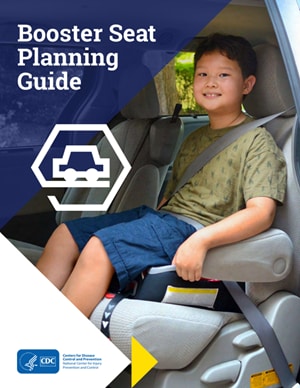Booster Seat Planning Guide
CDC’s Booster Seat Planning Guide [PDF – 44 pages] can assist States, Tribes, Localities, and Territories with assessing, planning, and implementing improved booster seat laws to reduce crash injuries and deaths among children.
Motor vehicle crashes are a leading cause of death among children in the United States. Many deaths and injuries can be prevented with the proper use of car seats, booster seats, and seat belts.
Research shows that proper restraint use decreases as children get older. Booster seat use reduces the risk for serious injury by 45% when compared with seat belt use alone.
Booster seats are an important stage of child passenger safety. They elevate and position a child so that the seat belt’s lap and shoulder belts fit properly. Proper seat belt fit occurs when the lap belt is across the upper thighs (not the stomach) and when the shoulder belt is across the center of the shoulder and chest (not across the neck or face, and not off the shoulder). This usually occurs when children are between 9 and 12 years old.
Research shows the most effective strategy to increase booster seat use is through updating, implementing, and enforcing state child restraint laws with booster seat provisions—commonly known as “booster seat laws.” Booster seat laws also reduce crash injuries and deaths among children under age 9 who are covered by these laws.
The Booster Seat Planning Guide [PDF – 44 pages] outlines five steps to develop an action plan to move booster seat safety forward:
- Learning about booster seat laws in your state or community
- Learning about which motor vehicle crash data are available
- Creating and strengthening partnerships
- Forming an action plan
- Developing a communication plan
Read the Booster Seat Planning Guide [PDF – 44 pages] and take action to keep children safe on the road.
